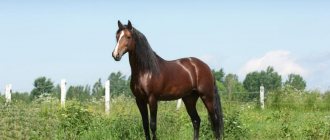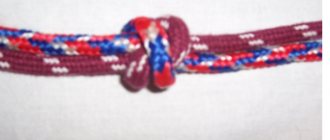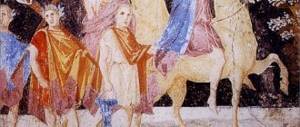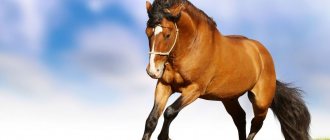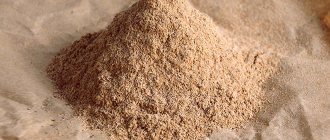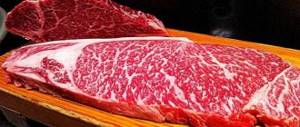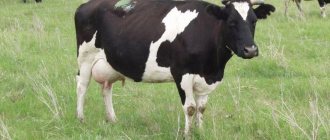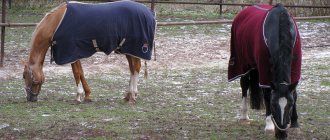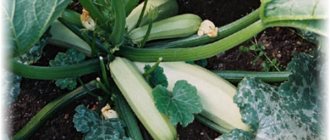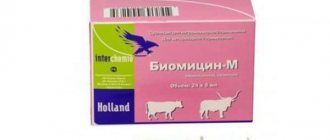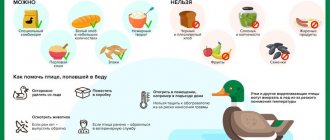How to make a horse cordeo with your own hands
This device is quite popular these days. The widespread use of the cordeo is associated with the growing trend of natural horse control, which does not involve the use of a bridle or other aids. It is a rope that is put on a horse and with its help the movement of the animal is coordinated.
Cordeo does not involve the use of a bridle or other aids
It's quite easy to make it yourself
Good twine or strong braid, a little diligence - and the device is ready! The most important thing is that it is wide enough. A narrow cordeo can, when stretched, injure the animal's skin. You should measure the width of the animal’s neck in the chest area and begin weaving
You can use both the harness and braid techniques. When finished, burn the ends and tie knots on them.
You should measure the width of the animal’s neck in the chest area and begin weaving. You can use both the harness and braid techniques. When finished, burn the ends and tie knots on them.
Making a rope halter
For production, both nylon rope and yacht rope are used. Since nylon is a more slippery material, it is more difficult to make a halter from it yourself.
According to the measurements taken from the table, sequentially, using one end of the rope, tie the usual 4 knots. Next, in size, the rope is folded into a loop, and a knot of the usual shape is tied, as when tying shoelaces. The length of the loop should be about 10 cm.
Nasal knots are tied on both sides of it. When you tie them, the halter will have two parallel ropes of the same length, which are connected to each other by these knots. Then you should deal with the throat knot. Using the dimensions indicated in the table, it is tied so that it is in the middle, at the same distance between the nasal knots. On both sides you will get ropes of different lengths. This needs to be fixed.
The next step is to tie a knot near the animal’s right ear. The halter must acquire the proper appearance. Compare all sizes using the table. They should be almost the same, the difference should not be big.
Next, you need to tie two long halter ropes into a regular knot. We get 2 loops, the length of which is 10-12 cm. To tighten it completely, you must first try it on a horse.
The ropes must be the same length. When using a rope made of synthetic material, use a lighter to melt its ends. Then they can be tied with a strip of leather or left untied.
A horse halter made from rope is considered ready-made. During fitting, the sizes are adjusted according to the animal's head. In this case, the nodes are shifted in the desired direction (up or down). Having adjusted them completely, they need to be tightened. If the halter is to be used for riding, the distance from the horse's chin to the knot should be approximately 10 cm.
Harness equipment
There are 2 types of harness: European and Russian.
European harness consists of:
- Bridles.
- Shorkie. Placed on the animal's chest through the neck. Consists of wither, connecting, retaining and chest straps. Connecting straps may have rein rings.
- Saddles. Equipped with rings for reins.
- Girths. The design of this part of the equipment is to secure the saddle.
- Lines. Attached to the shorka and crew. Can be adjusted in length.
- Harnesses. It consists of a back belt, connecting (sloping belts), a bypass belt and a tailrest, due to which the harness is fixed.
- Reins.
The saddle and the abdomen are absent.
Russian harness consists of:
- Bridles.
- A saddle located at the withers and fixing the harness.
- Thanks to the girth, the saddle is attached to the horse's back.
- The harness holds the clamp and secures it while the vehicle is moving. It consists of several straps that can be adjusted.
- The strap passing through the rings on the saddle is called a saddle strap, and it is attached to the shaft. Thanks to this belt, the main elements of the harness are held and fixed.
- The clamp provides traction from the horse to the vehicle. It consists of pliers, felt lining, tugs, tires, ring and throat.
- The belt that runs under the horse's belly and is attached to the belt loops on the girth is called the underbelly. It is also attached to the shaft.
- Thanks to the connecting element - the arc - jerks and impacts are softened.
- The final element of the harness is the reins, which control the horse while moving.
We invite you to join our group on VKontakte or Odnoklassniki, where new articles are published, as well as news for gardeners and livestock farmers.
What is a halter for horses?
A halter is a device that helps accustom a horse to a person. This is a type of headband that does not represent a complete bridle. It is used to control the horse, cleaning, saddling, and leading. By wearing it, it is more convenient to handle her in the pasture. At the same time, the animal’s mouth remains free, which allows it to graze calmly. It consists of a capsule, chin, cheek and occipital straps.
Equipment for horses: general information
Equipment for horses has a powerful base of all kinds of details. At first glance, a high-quality bridle and a comfortable saddle will be enough for an ordinary promenade.
And yet, this activity is directly associated with the risk of injury, so it is very important to protect yourself as much as possible and think through everything to the smallest detail.
In modern horse breeding, there is “armor” for training, road and safety equipment. It is necessary to realize that, for example, training equipment is used only on a well-trained and calm horse, and other aids are designed to correct the animal’s disposition.
Equipment for horses consists of a large number of parts
How to make it yourself
Ammunition can be purchased in specialized stores or made yourself. Let's give some tips on making the most necessary elements of horse equipment.
Sweatshirt
To sew a saddle pad, you must first take measurements so that you can make a pattern. If possible, it is most convenient to outline a ready-made, purchased sweatshirt. Otherwise, you need to take into account that the product must be larger than the size of the saddle. The standard size of a saddle pad is 70x90 cm.
Important! When making a pattern, you need to take into account that the inner layer should be 10 mm smaller than the others around the entire perimeter, and the top layer should be 10 mm smaller than the bottom along the central seam (the thinnest place). Baste all parts of the pattern and try on
Additionally, iron the product and sew it on a machine. Hide the edge seams behind the tape
Baste all the pattern pieces and try them on. Additionally, iron the product and sew it on a machine. Hide the edge seams behind the tape.
bridle
To sew a bridle, it is very important to take the correct measurements:
- from one corner of the mouth to the other through the cheeks and behind the ear - add 10 cm for loops, to adjust the length, 7-10 cm for buckles;
- distance across the forehead between the cheek straps, plus 10 cm extra for loops;
- between the same points only downwards, through the ganaches and plus 10 cm for the buckle (for the chin strap).
Read more about how to make a bridle for a horse with your own hands and how to put it on correctly.
blanket
It can be sewn from cotton fabric. The size depends on the dimensions of the animal's body. The standard dimensions are 2x2.4 m. In addition to the fabric, you will need 3 carabiners, 3 rings, 150 cm of wide elastic, about 10 m of braid with a minimum width of 20 mm.
It will be useful for you to learn how to make a blanket for a horse with your own hands.
You can use a solid rectangle of the desired size, or sew it from two smaller ones. The resulting canvas is folded in half, and a neckline cut out is 0.6 m long and 0.2 m high. All corners of the blanket are rounded. The edge is finished with bias tape. From the edge of the neckline, at a distance of approximately 1.4 m, a strip is sewn perpendicular to the back line, where the elastic will be threaded. Both edges should be open. The length of the strip is 0.3 m. An elastic band of 0.4–0.45 m is pulled into it, which is sewn into a ring. This is necessary to fix the blanket on the tail.
In the girth area, a double elastic band 0.4 m long with a carabiner is sewn to the lower edge of the blanket on one side, and a ring for the carabiner is sewn on the opposite end of the product. Carabiners with an elastic band and rings for fastening the product around the neck are also sewn onto the front edges of the blanket.
Saddle
It is extremely difficult to make this element of horse harness yourself. The task can be simplified by having a tree (frame) from an old saddle. If there is no such element, then the creation of the saddle will have to begin with its manufacture. It is made of wood, plywood or fiberglass.
We advise you to learn more about the types of saddles for horses, as well as how to make a saddle with your own hands.
Measurements are taken:
- at the highest part of the withers;
- at the location of the anterior curved edge of the saddle;
- end of the withers (low back);
- end of the saddle (at the level of the 18th spine);
- arch of the back from the withers to the 18th thoracic spine.
Using a chisel and a plane, we create a copy of the layout from a piece of wood. We create a bend using a jigsaw and sandpaper. When the tree is ready, you can begin to do the interior upholstery. For this, foam rubber (polyurethane foam) is used: it is cut to shape, if necessary from several layers. You can take plywood as the base of the saddle - it is nailed to the tree and foam rubber is attached to it using nails so that they go into the tree. For external upholstery, leather is most often used, less often - burlap. The tree is sheathed with the selected material. It is better to purchase ready-made girths.
Rope halter
Do you have a young horse and want to train him to a halter? It's easy to do it yourself. To do this you will need regular other rope and the ability to tie knots. Stick to the plan and you will succeed.
Step-by-step instruction
- First of all, you need to learn how to tie double knots. They hold and fix the rope well and do not put pressure on the horse's skin.
- Tie a simple knot, but do not tighten it. The end of the rope must be brought behind the first knot parallel to the loop. Then a second knot is tied inside the first one.
- Now you can tighten two knots at once at the same level. The result will be a cross knot in the shape of the letter “X”.
- Once you learn how to tie knots, the rest will be quick and easy. Since all you need is to have measurements and tie knots according to these measurements to get the desired part or side of the halter top.
- For more details, see the diagram in the video.
Sorry, there are no surveys available at this time.
What does a rider need?
Before you go to take riding lessons, it is recommended to purchase special things for training processes
Not all people understand the importance of clothing and shoes when riding. And this is significant, since a person will be comfortable interacting with an animal
Shoes
There is only one requirement: it must pass freely into the stirrups. In addition, a small heel is required. Shoes with grooved soles and thick soles are not suitable for riding. If suddenly the rider has to fall, the leg will get stuck in the stirrup and the person will be injured.
Riding boots
Leggings
In our country, this name was given to overhead boots, which are secured to the leg using a zipper, screws, fasteners, etc. Today, leggings are made of leather and suede. Can serve as a replacement for boots when riding.
Leggings
Breeches
These are just tight-fitting pants that do not have a rough seam so that the rider does not rub his legs while in the saddle. Wearing breeches is recommended for any horseback riding, even in very hot weather.
Chaps
They are something like suede or leather stockings that have a belt. They came to Russian territory from Mexico, where this clothing is used to protect the legs from thorns, blood-sucking insects, etc.
Chaps
Jacket, vest
Both of these garments should be short in length so that they do not snag on the saddle. Each sport has a specific style and requirements for outerwear.
Gloves
It is recommended to buy them in a specialized store; they serve to make it easier to hold the reins so that they do not slip in your hands. Additionally, they protect the skin from injury.
Helmet
Protects a person's head from possible injury after falling from a horse. Both children and adults must wear a helmet in accordance with safety precautions when practicing horseback riding.
What should you have to conduct hippotherapy classes?
Treatment procedures should be carried out only in the presence of a qualified trainer with special education. The lesson is conducted on a bareback horse. A saddle is allowed.
Types of harness
The harness is necessary to provide comfort not only to the rider, but also to the animal. The owner shows that he is in a dominant pair, the harness makes it easy to control the horse, without additional coercion, the animal is under control.
The harness may include blinders on the eyes, sometimes they are absent, it all depends on how exactly the animal is used. During competitions, this accessory is of particular importance as it helps the horse concentrate on the task at hand.
Reins, girth and other elements are selected individually. More often, the owner takes into account the horse’s individual characteristics and other factors. Horse equipment has its own classification, for example, there is harness for working in the field, sports and competitions, or organizing a cart.
If we take into account the number of harnessed horses, the harness can be:
- single;
- steam room;
- multi-horse, when there are from 3 to 8 horses in one bunch.
The method of harnessing is also a determining factor and constitutes a separate classification.
Single-arc. It is easy to guess that only one animal is put in the harness. The design uses a wooden arc, and in addition, horse-drawn vestments.
Horse harness
A horse harness is an almost irreplaceable accessory that is used for the convenience of both the owner and the animal. The first, with the help of such equipment, indicates his dominant status and gets the opportunity to control the horse without coercion. The horse, with the help of harness, learns to fulfill the duties assigned to it.
Today we will take a closer look at what horse harness is - why it is needed, what it consists of, what variations it has. We also offer detailed step-by-step instructions from which you can understand how to harness a horse correctly.
Horse harness
Contents of step-by-step instructions:
Care items
Grooming items are no less important and significant than a cord for a racehorse or a tongue for an active horse. You must have items such as:
- mitten (removes dirt);
- brush for combing the mane and removing dirt;
- sponge (cleanses mucous membranes).
You should also have a bucket and a scraper in your arsenal, with which you can easily remove moisture and also perform a light relaxing massage. Care allows you to keep horses clean, improves their mood and well-being.
Equipment items include a horse collar, bandage and holster. For educational purposes, a whip is used, which allows you to pacify a wayward horse. Convenience is facilitated by such elements as a bib, undertail, blanket, trok, fillet, grading, cape, collar. The saddle set is complemented by a bag. Also, these elements can act as a decorative addition to the standard set. It is actively used as a pelam for any horse or a pad for a racehorse in competitions. The name of each element defines the task it performs.
How to choose?
There are basic rules for choosing equipment for a horse that are worth listening to.
The animal's temperament must be taken into account. If the horse is non-aggressive and calm, then you can purchase thin and hard bits. For active horses, it is better to buy soft equipment.
The clamp is not selected by eye; the width and length of the animal along the back must be taken into account
You need to understand that a different clamp is used for harnessing a cart and performing work in the field. When purchasing an arc, the main attention should be paid to the strength of the structure and elasticity.
The reins can be either solid or composite. The latter are used when there are several animals in the harness. The performance of the horse largely depends on the quality of the selected equipment, so you should not skimp on accessories.
When purchasing a collar for a harness horse, its weight should be less than that of the one used on a stud horse.
Saddle
Making a saddle with your own hands is difficult, and you should not do it unless absolutely necessary. Professionally made, it is safe for the horse and rider. Only a person associated with professional production can independently make a high-quality saddle. There are many recommendations on how to make a saddle for a horse.
Before you start making a saddle for a horse with your own hands, make a model of it. For this, a dense wire is applied to the animal’s back behind the withers and bent clearly along the contour of the body. Next, according to the resulting pattern, the outlines are transferred to cardboard. A model is cut out of cardboard and applied to the back of the animal. It must exactly follow all the curves. Afterwards, a tree is made according to the model and then the saddle is assembled.
Tree of saddle
An amateur will not be able to make a saddle correctly. You cannot skimp on this piece of equipment, and you still need to buy a high-quality saddle made by a master.
It is not necessary to buy a sleigh for a horse. When you have certain skills in working with wood, a tool and a desire, you can make them yourself. The sled is not high and therefore, even if something goes wrong and it gets damaged during the ride, it is almost impossible to get injured.
Painted sleigh
The most difficult thing to make is the runners. They use strong metal pipes. The length of the pipes is needed 2-3 meters longer than the sled. This is necessary in order to bend the runners on both sides and place them under the sleigh without difficulty. For bending, a special tool is used - a pipe bender.
Afterwards, the bottom of the sled is assembled with stands made of thin tubes or strong wooden blocks. Whenever possible, all non-load-bearing structures are made of plywood to reduce the weight of the sled.
After the horse sleigh is assembled, it is finished and painted. If the sled is designed for riding, then it should be painted to give it an attractive appearance.
Horse handling equipment
Controlling a horse is not an easy task, and in order to use the horse every day, the rider must have a list of special equipment.
Bridle
Everyone, without exception, knows that you can control a horse using the specific structure of the animal’s jaw and a special bridle. The horse has toothless edges in the jaw where the bit (snaffle) is inserted, namely two iron rings and a bit. This gnawing thus acts on the tongue, jaw and lips of the animal, giving it signals to control the head, neck and even shoulders. That is, with the help of a bit, the rider is able to either gradually slow down the movements, or do it abruptly, or completely stop the horse. And so that such a device does not cause harm to the animal, the snaffle is made of dense metal. The thinner the tenzel, the stricter it is considered. Such equipment is prohibited for horses with sensitive soft mouths.
To transmit commands to his horse, the rider uses special reins, which are fixed on both sides of the tensile rings using buckles. Reins are usually made of either braid or leather. The system of belts around the circumference of the head, neck and shoulders is called a bridle, and in general the bridle consists of a rein, a headband and a bit.
Martingale
Not always, but there are cases when a martingale is attached to the bridle, that is, a specific device that prevents the horse from throwing its head back high. If the horse is also able to throw back its head, the rider immediately loses control of it and may be injured by its poll. The martingale at one end is fixed to the saddle girth, the other two ends (their rings) pass through the reins.
Additional equipment
In addition to the above main devices for controlling a horse, the rider may have other additional equipment.
Whip
For this, a flexible and durable twig is selected, the length of which is up to 70 cm, and the thickness is no more than 1 cm. The end of the twig requires a softening agent - a cracker. The rider always holds the whip in his right hand, and it should be lowered down. And if the animal does not cope with the task or simply refuses to cooperate, the rider gives her the appropriate signal with a light pat on the side. You need to understand that not a single horse tolerates cruelty and violence. For an experienced rider, a rein and leg will be enough.
Jumping whip for horse
Spurs
It is forbidden to use spurs with a special wheel, as such equipment can injure the animal. Only experienced riders resort to spurs; a beginner can only injure the horse.
Korda
This is a ribbon made of braid, the length of which is about 15 cm and the width is 4 cm. It is used to train the horse and rider in jumping, dressage and other techniques. One end of the cord involves a strap attached to a buckle, the other end is a loop 20 cm long. If the horse begins to warm up, the rider attaches such a cord to the tension ring either on the right or left and moves away from the animal to release the ribbon of this equipment. After this, one hand is directed into the loop, with the other hand the person controls the degree of tension of the cord. If movement to the left is required, adjust the left side of the cord, and vice versa.
Horse on the line
Beach
If young horses, characterized by laziness and disobedience, are used to teach techniques, a more strict device - a whip - is used instead of a cord. As a rule, the rider makes it himself. To do this, he takes an elastic stick about one and a half meters long, and from thin straps forms a striker about 3 meters long, tightly attached to a wooden handle.
Horse riding equipment
To control a horse, the rider uses the physiological characteristics of the animal's jaw. There is a toothless edge on the gum where the bit (or bit) is inserted. It consists of 2 rings and a nibble, thanks to which the horse is controlled. With the help of iron you can slow down or stop the horse. The gnawing puts pressure on the jaw.
The snaffle is selected individually for each horse, because... it can have different forms and severity. You can’t buy hardware just because you like the look. It is important to remember that the bit is in direct contact with the animal's mouth, and if there is any discrepancy, it can cause discomfort and pain in the horse. It is recommended to choose the softest possible iron: the thinner the bit, the stricter the bit is considered.
Headband (or bridle)
The bridle has many purposes, but the main function is to support the iron. Thanks to the bit and reins, the rider can transmit commands to the horse.
There are various types of bridles that are used in sports competitions, horseback riding, and when riding young horses.
This is a leather strap that is attached to snaffle rings. It allows the rider to maintain contact with the horse's mouth. The rein is necessary to control the front part of the horse's body and is one of the main means of control. Using the reins, the direction of movement, the horse's stopping, and the transition from a fast gait to a slower one are set. The position of the head and cervical region of the horse is adjusted.
This piece of equipment is similar to a bridle, but there is no iron. A halter is necessary for moving a horse from one place to another, for carrying out veterinary procedures, trimming hooves, etc. With the help of a halter, you can secure the horse in the aisle of the stable using straps. Another part of this equipment is the chambur (rope), with the help of which the horse is tied or moved from place to place.
Read also: Milk with propolis at night: recipe and features of use
The product prevents the horse from throwing its head back. The harness consists of two straps, thanks to which the horse's head is held and the rider is protected from being hit by the horse's head.
The martingale is attached to the girth; on the chest it is divided into a pair of belts with rings through which the reins are pulled; in front of the rings, closer to the bit, special stops are placed that do not allow the rings to slip towards the bit buckles.
Refers to interchanges and is an oblong-shaped strap. The device is used during training to keep the horse's head in the desired position. The chambon is fastened to the girth and iron, and passes under the cheek strap of the headband.
Chambon is fundamentally different from martingale and does not limit the horse's ability to stretch its neck. Thanks to this equipment, excessive load is removed from the horse’s back.
This piece of equipment serves to protect the horse’s back, but the rider’s comfort comes second. If you don't use a saddle, there will be more pressure on the horse's back than with it. Thanks to this equipment, the rider's weight is evenly distributed throughout the horse's body.
The saddle must be selected individually for each horse. Here, a lot depends on the length of the tree, the height of the withers and other important parameters. Saddles come in the following types:
The saddle is chosen depending on the horse's use. There are special saddles for various types of equestrian sports, as well as for walking or racing. Universal and multifunctional products are not as good as they seem, so it is better to have several saddles for different tasks that will be assigned to the horse. The manufacturing company also plays a big role. If you have financial capabilities, it is better to choose a foreign option.
This is the main part of the saddle. They serve to fix the rider's legs and maintain balance when riding. Initially, stirrups were loops, which was an uncomfortable and unsafe option. Today there are a large number of different stirrups of various shapes.
This device is an auxiliary element for controlling a horse. The main purpose of the whip is to strengthen the rider's command. In official competitions, the whip can be used with a lot of restrictions, and in some sports it is generally prohibited for use.
To reduce the impact, the whip has a special firecracker at the end. When riding in an arena, the whip should be in the hand that looks into the center of the arena.
It can be thought of as a stick with a long rope of about two meters. This product is used when working with a horse on a line. The whip has a handle and a rope that ends in a knot that imitates the sound of a snap. Whips are rarely used as a means of punishment; when used in the hands, they help a person give the horse direction and move from gait to gait.
They serve to enhance the impact of the rider's leg when riding and are worn on the legs. The design and length of spurs can be varied. Today it is prohibited to use spurs with wheels, which injure the skin of horses on the sides.
Basic rules for fitting saddles
The manipulations that should be performed during this process are quite energy-consuming.
- Any saddles are customized for a specific horse. You can determine whether the fit was made correctly by the following indicator: the saddle flaps should follow the relief of the horse's back. To achieve this result, it is necessary to place the tree on the animal’s croup, and the loose areas should be filled with a layer of felted wool material. Then place it on your back again and check the tightness of the fit again.
- During movement, the girths loosen, therefore, it is necessary to adjust the degree of their tension in advance.
- The underarm should also be well adjusted. It is quite easy to check the correct fit: you should place your palm with its edge in the space between the pad and the horse in the lumbar area, and if it fits, then everything is done correctly.
- Sometimes it is necessary to shorten belts, but reducing the length of the belt by tying it in a knot is prohibited.
- There should be space for ventilation between the saddle pad and the horse's spine.
Video - How to saddle a horse correctly?
Horse equipment includes many devices and accessories. There are, for example, even gel shock absorbers to reduce the force of the rider’s impact on the animal’s croup. A horse is a creature that requires constant care and attention. With a caring owner, she will always look healthy and well-groomed. And available protective equipment will help in accomplishing this task.
blanket
Horses cannot tolerate frost without harm to their health. To be in good condition, they need, like people, outer clothing, which is a blanket. The blanket looks like a blanket. There is no need to buy a ready-made blanket, because it is very easy to sew it yourself.
To obtain measurements the following are measured:
- Length from chest through legs (sides) to tail;
- Length of the back from the withers to the beginning of the tail.
When taking measurements is impossible, you need to rely on the average table used to sew blankets in workshops. A DIY horse blanket is as comfortable as possible for the animal.
Using a standard pattern, adjust it to the size of your horse. After this, all the details are cut out from the selected fabric (cotton for summer, wool for winter). You need to add 15-20 cm to the seams. First, all the elements are swept away, and then stitched on a sewing machine. For a winter blanket, you also need to provide a lining. A fastener is made in the abdomen and chest area. At the discretion of the owner, it can be made of Velcro, buttons, carabiners (preferred) and large metal buttons. Blankets should be summer and winter, as well as light wool, which are put on the animal if it sweats during work in cool weather. You can’t put on a warm blanket right away, but a light, slightly insulated one is necessary. As soon as the animal has cooled down, it is wrapped in warm clothes. Knowing how to sew a horse blanket can save you a lot of money.
Protective equipment for horses
blankets
They are a universal invention that allows the animal to feel warm and dry. They are used when transporting animals or in the stables if temperature changes are expected. The fabric is made from warming woolen fabric. To secure the blanket on the horse's body, there are special fasteners and belts.
A blanket is a protective blanket that is used for heating during the cold season. When caring for a horse, it may be washed frequently, which reduces the amount of protective fat, and therefore the animal will need additional protection.
Winter blanket
Blankets are sewn taking into account the climatic conditions and physiology of animals. There are a huge number of different blankets suitable for all kinds of life situations:
- walking;
- night;
- rain;
- stall;
- working;
- winter
It is recommended to have several options for horse blankets, for example, winter, stall and working.
Bandages
They serve to protect the limbs and are sewn from cotton fabric; they protect muscles and tendons from stretching. In winter, it can be used as a means of warming the horse's legs. For training, use knitted or crepe bandages about 8 cm wide.
To prevent blood circulation from being disrupted, it is important not to pinch the limbs when bandaging. A separate requirement is that there should be no gaps between the layers of bandages where dirt or soil particles can get in
Bandages
Boots
Also serve as a remedy against injuries to the limbs. Can be worn over bandages or simply on the metacarpus area. There are special fasteners or Velcro for fixation.
Saddle pad
Used when saddling a horse and placed directly on the back. Performs a protective function. For production, cotton fabric with a soft filler is used.
How to choose quality equipment for a horse
The harness is constantly in contact with the animal's skin, so it is very important that it creates a minimum of discomfort for him. It is usually made from leather (bovine or calf), which allows it to be durable and elastic. Let's start choosing ammunition with a bridle
For trotters, and other breeds, it is most often made from rawhide, which allows it to stretch well but not tear. Bridles have a size guide. By design, they are “blown” (an additional strip of leather or elastic is sewn on the forehead and on the applied belt, trimmed with leather of a different color to make it look nice) and “round” (made of double stitched leather). There is no need to pay special attention to this moment; it is rather decorative in nature. The main thing is that the leather is of high quality, has a manufacturer’s “stamp”, a label, even seams, and all elements are sewn evenly
Let's start choosing ammunition with a bridle. For trotters, and other breeds, it is most often made from rawhide, which allows it to stretch well but not tear. Bridles have a size guide. By design, they are “blown” (an additional strip of leather or elastic is sewn on the forehead and on the applied belt, trimmed with leather of a different color to make it look nice) and “round” (made of double stitched leather). There is no need to pay special attention to this moment; it is rather decorative in nature. The main thing is that the leather is of high quality, has a manufacturer’s “stamp”, a label, even seams, and all elements are sewn evenly.
The same must be taken into account when choosing other components of the harness, such as a rein and a girth. When choosing a reason, you need to remember that they come in leather, rubber and braid. The former are durable only if the top is not glossy, but the latter are difficult to choose high-quality ones, since there is often no solid leather insert under the rubber top. If you are lucky enough to choose the original, they will be very convenient. Braid ones, especially imported ones, are easy to maintain and last longer than the two previous options.
Important! Each rider chooses the width of the reins independently, but it is not advisable to take it wider than 2 cm, since it is not convenient to hold them, and the strength of the material is enough so that a narrower strip of rein does not break. Girths can be made of natural and artificial leather, synthetic materials: the main thing is that this element of ammunition is durable, but at the same time elastic. This is necessary so that it secures the saddle well on the horse’s back and at the same time does not interfere with the horse’s sides rising and falling when breathing
This is necessary so that it secures the saddle well on the horse’s back and at the same time does not interfere with the horse’s sides rising and falling when breathing
Girths can be made of natural and artificial leather, synthetic materials: the main thing is that this element of ammunition is durable, but at the same time elastic. This is necessary so that it secures the saddle well on the horse’s back and at the same time does not interfere with the horse’s sides rising and falling when breathing.
The type of saddle depends on what goals you set for yourself. It is better not to take a universal or multifunctional one, since each type of riding should have its own saddle. For example, if you plan to ride for a long time, then a Western (cowboy) saddle with additional softening inserts is best suited. A horse can stay in an English saddle for no longer than 2–3 hours. Also, the saddle must be individual for each horse, since the back structure of animals varies.
When choosing tensiles and stirrups, give preference to metal, as it is a more durable material compared to plastic and rubber. Stirrups are selected individually for each rider. Choose a stirrup width that is 20–25 mm larger than the width of your shoes, since your foot should fit in and out of the loop freely. It’s good if the stirrups have a rubber insert that will prevent your leg from slipping.
Pad for bareback riding. How to choose?
Bareback pads are very popular among equestrians. They are convenient in many cases. For example, when a horse is actively growing and it is difficult for him to choose a saddle, for riding in the fields and trips to the river, for riding children, and so on. There are many models and it is difficult to understand them. How to choose a pad for bareback riding?
Pad model
To choose a pad model, you must first decide why you need it. The simplest models without panels, made from plain fabric, can be suitable for short rides on muscular horses. Essentially this is a saddle pad with a girth. Budget models have a right to exist if used wisely. If you have a young, not very muscular horse, or you are planning long trips, then it is better to choose a pad with panels. The panels better distribute the rider's weight and protect the horse's back from painful pressure points.
Pad thickness
The thickness of the pad itself matters. The very thin pad does not protect either the horse or the rider. Too thick does not fit well on the horse and does not allow air to pass through. Therefore, a pad thickness of 2-3 cm is optimal. This pad performs protective functions and fits well on the horse’s back. But not only the thickness is important, but also the padding material. The inner part of the pad is foam (foam rubber) or sheepskin.
Sheepskin is soft, but falls off quickly and is very warm on the back. Most manufacturers prefer modern foam padding. The quality of the foam is extremely important. Simple low-density foam sold in sewing stores will not work. It will not support the rider's weight and performs almost no protective function. We need modern high-density foam (more than 35 kg/m3), which allows air to pass through well and can withstand heavy weight. Lazypony riding pads are made from this foam.
Availability of stops
The pad may or may not have stops. Stops make landing safer and more comfortable. This is especially true for owners of playful and young horses. Also, pads with stops are often chosen for ponies and training children. These pony pads are safer and more convenient for small riders. Additionally, pads with stops are typically dressage pads. They help maintain the desired position and are more comfortable for long work.
Small stops or no stops are good for bathing, as the stops will take longer to dry. These pads are smaller and lighter. They are especially loved by show jumpers who are not used to sitting in a dressage seat.
Pad fabric
Another important point is the fabric. Many budget models are made from ordinary dense fabric, which is not designed for high loads. As a result, such a pad will quickly wear out under the knees, above the withers and in other places of close contact. Therefore, if you want the item to last for a long time, choose a model made of special abrasion-resistant fabric.
Abrasion resistance
Abrasion resistance is measured in Martindale cycles. If the manufacturer does not provide this information about the fabric, then most likely it is not intended for making pads. For example, at the Lazypony saddlery we use modern fabric with abrasion resistance of more than 200,000 Martindale cycles. This is a very durable fabric that will withstand daily use. By comparison, upholstery in high-traffic public areas uses fabrics with abrasion resistance of 40,000 Martindale cycles.
Hair protection
It is also important to pay attention to whether the fabric easily becomes clogged with wool. Ordinary fabrics quickly and very heavily become clogged with wool. They are difficult to clean and soon begin to chafe in places where they are clogged with hair. The same thing happens with sheepskin. It is soft and pleasant for the horse, but difficult to care for and short-lived. For more advanced models, modern technological fabrics are used that are not clogged with wool thanks to the method of weaving threads. We use new generation Spanish fabric. It has a special layer between the loops of the fabric and its visible part, which prevents snags and wool from getting between the threads. Thanks to this, you just need to brush off the fur with your hand after riding and the pad is clean again.
Easy to wash
As for ease of washing. Pads cannot be washed in a washing machine. They are too big and don't handle machine wash well. Therefore, it is better to choose pads that are easy to wash in a stable. Simple cotton and many synthetic fabrics easily absorb dirt and are difficult to wash without a machine. This can be a big problem. Still, I would like the pad to have a neat appearance, without stains or streaks. Modern specialized fabrics are easy to clean, so even considering that they are somewhat more expensive, it is better to choose a pad made from such materials.
We make Lazypony bareback pads from fabric with Aquaclean® technology. This is a special technology that allows you to clean most household stains with plain water in a few seconds. Thanks to this fabric, the pad is easy to clean even in the stable, even without hot water. In addition, it is soft, pleasant to the touch and does not become greasy even in summer.
Quality and appearance
Appearance is what we pay attention to first. Pads are not cheap and we, of course, want them to be beautiful and retain their original appearance for a long time. What should you pay attention to here? On the quality of seams, on small details. How are the straps sewn on? Are the seams even and neat or are the threads sticking out in all directions? Is the fabric pleasant to the touch? Is the color bright and rich or faded and indistinct? Quality is an objective thing, it can be measured and verified. Budget pad models are rarely of good quality. Like a regular saddle, a very cheap pad almost always suffers from poor quality workmanship and materials. You can choose such a model, but it is important to understand that it will not last long and will quickly lose its appearance.
A good pad will last you for years and is a good investment. One pad can be safely used on many horses, every day and under different riders. And of course the appearance.
A quality riding pad will have strong and beautiful seams and will be made from specialized, durable fabric. Lazypony pads are made to order and there are no unimportant parts for us. Every seam, every smallest detail - everything is done at the highest level. In addition, you can choose the colors of the pad and its parts to suit your taste. Your pad will be unique!
As you can see, the choice of pad is influenced by a number of factors. A good, high-quality bareback pad will serve you for many years and is worth the money. Cheap pads may be a good temporary measure, but don't expect quality or durability. What to choose? The only question is your goals and capabilities. At Lazypony Saddlery we are pleased to offer you a line of pads of the highest quality! Choose a pad to suit your taste and enjoy new sensations!
What does horse harness consist of?
All accessories of horse harness can be divided into three groups: protective, for control and for the safety of the rider in the saddle.
Essential elements
The main control elements of a horse are the bit and bridle. The first are a metal rod consisting of two movably connected parts, at the ends of which there are rings for attaching the bridle. The bit is needed to influence the toothless edge of the animal’s mouth to make it easier to control. The bridle, or bridle, supports the bit, and also “transmits” the signal sent by the rider through the reins and requiring a certain action to be performed.
Did you know? The first type of saddle was used by Assyrian cavalrymen in 700 BC. e.
Other elements of horse harness include the following names:
- halter - the same bridle, but without a bit, that is used to keep an animal on a leash;
- reins - a leather belt fastened to the bit rings and which is the main device for controlling the horse by the rider;
- martingale - a short strap attached between the forelimbs of the animal and connecting the front girth and reins in the area of the bit; helps keep the animal’s head in a certain position;
- chambon - a strap attached to the snaffle bridle and passing along the cheek straps down between the animal's forelimbs to the nearest girth; allows you to control the tilt of the animal’s head;
- saddle - there are a huge number of its types, but all of them are designed to protect the animal’s back, or rather, to evenly distribute the load;
- stirrups - they are a metal ring and a fastening strap for fixing on the saddle, helping the rider to jump on the horse and stay in the saddle;
- whip - a flexible rod with a handle that helps control the horse during training;
- whip, or whip - a shock device consisting of a long handle and a braided belt with a knot at the end, can be about 200 cm in length, intended for training a horse in the arena;
- spurs - a metal bow with a wheel or burdock, attached to the back of riding shoes and helping to control the horse.
Protective equipment
Elements of protective equipment are:
- blanket - a cape that covers the body of a horse, protecting it from bad weather and insects;
- bandages - a cotton product designed to protect the lower part of the animal’s limbs from injury during exercises or active work;
- boots - a leather device to protect the horse's pastern from injury, attached over bandages;
- rubber holsters - a cone-shaped device that protects the crown of the hooves from cracks and abrasions during racing;
- a saddle pad, or sweat pad, is a cotton, cloth, felt blanket placed under the saddle to protect the back from chafing and to absorb sweat.
Protective equipment
To ensure that the animal feels comfortable at any time of the year and is not exposed to hypothermia, special ammunition was developed. In addition to protecting against weather conditions, it is used to prevent injuries and sprains.
blanket
A universal invention that gives the animal a feeling of warmth and dryness. It is actively used during the transportation of horses; in the stable it saves from sudden temperature changes. It is mainly made from warming wool fabric. It is fixed on the body of the horse using fasteners.
At its core, a blanket is a special protective blanket that is used for heating. Since constant grooming and regular washing reduce the horse's protective fat layer, it needs additional protection. Any type of blanket is produced taking into account the climate and physiological characteristics of the horse. The variety of these bedspreads is comparable to the number of dresses in a fashionista’s closet. It is recommended to purchase several types of blankets for all occasions. The emphasis should be on three basic varieties: a winter version, a deo modification for sweat absorption, and a “home” version for stables.
Levadnaya. This variety is used in situations where it is necessary to provide the horse with dry conditions. Made from compacted synthetic material that prevents the penetration of air and moisture. On the other hand, this fabric, thanks to its specially designed structure, allows moisture formed on the surface of the animal’s body to escape without creating conditions for overheating.
Levada blanket keeps the horse dry
Night. Made from reliable, durable fabrics with a specific lining. Recently, materials that do not require frequent washing are gaining popularity. In the autumn, it prevents the formation of undercoat, which the animal usually grows for the winter. This is a very important point, since overly thick hair makes caring for the animal quite problematic.
Night blankets prevent the formation of winter undercoat
New Zealand Levadna. Belongs to the group of heavy capes. It is made on the basis of tarpaulin, and received its name thanks to the country in which it was developed. Since it is quite heavy, special straps are used to secure it.
Wag and Gladiator. Made from synthetics. They are popular due to their specific cut: in addition to the body, they also protect the horse’s neck.
The Wag and Gladiator blanket protects the horse's neck
Konyushennaya. Designed for animals kept in stalls. Their main function is to protect horses' fur from dust and dirt.
Stable blanket protects the horse from dust
Melton. A cozy “cape” made of wool. It accumulates heat well, but due to this property it is quite heavy in weight, and cleaning it is quite problematic.
Wool blanket accumulates heat
In addition to these varieties, there are waterproof, special fly blankets, and there are even protective covers with holes for the eyes and ears.
Bandages
To protect horse limbs, cotton bandages are used to protect them from sprains. In the cold season, they are good as a warming agent.
During training, knitted or crepe bandages are used, about 8 cm wide. They must be wound very carefully on special linings
To ensure free blood flow, it is very important not to squeeze the limbs. You should also avoid any gaps where dirt can get in.
Bandages prevent horse limbs from sprains
